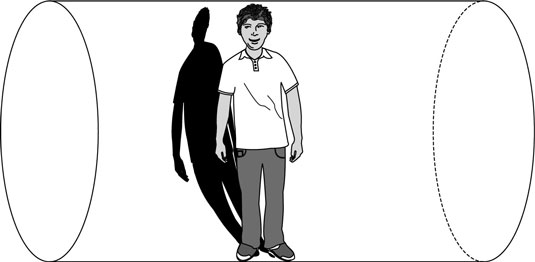Another key insight into string theory comes from the holographic principle, which relates a theory in space to a theory defined only on the boundary of that space. The holographic principle isn’t strictly an aspect of string theory (or M-theory), but applies more generally to theories about gravity in any sort of space. Because string theory is such a theory, some physicists believe the holographic principle will lie at the heart of it.
Capturing multidimensional information on a flat surface
It turns out, as shown by Gerard ’t Hooft in 1993 (and developed with much help from Leonard Susskind), the amount of “information” a space contains may be related to the area of a region’s boundary, not its volume. (In quantum field theory, everything can be viewed as information.) In short, the holographic principle amounts to the following two postulates:
A gravitational theory describing a region of space is equivalent to a theory defined only on the surface area that encloses the region.
The boundary of a region of space contains at most one piece of information per square Planck length.
In other words, the holographic principle says that everything that happens in a space can be explained in terms of information that’s somehow stored on the surface of that space. For example, picture a 3-dimensional space that resides inside the 2-dimensional curled surface of a cylinder, as in this figure. You reside inside this space, but perhaps some sort of shadow or reflection resides on the surface.

Now, here’s a key aspect of this situation that’s missing from our example: A shadow contains only your outline, but in ’t Hooft’s holographic principle, all of the information is retained.
Another example, and one that is perhaps clearer, is to picture yourself inside a large cube. Each wall of the cube is a giant television screen, which contains images of the objects inside the cube. You could use the information contained on the 2-dimensional surface of the space to reconstruct the objects within the space.
Again, though, this example falls short because not all of the information is encoded. If you were to have objects blocking you in all six directions, your image wouldn’t be on any of the screens. But in the holographic principle view of the universe, the information on the surface contains all the information that exists within the space.






